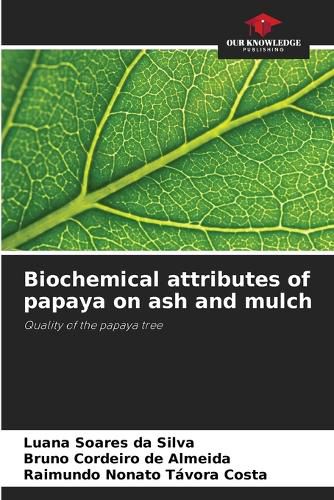Readings Newsletter
Become a Readings Member to make your shopping experience even easier.
Sign in or sign up for free!
You’re not far away from qualifying for FREE standard shipping within Australia
You’ve qualified for FREE standard shipping within Australia
The cart is loading…






The research was carried out in a family farming area in the municipality of Pentecoste, Ceara, and its aim was to assess the qualitative characteristics of total soluble solids, pH, total titratable acidity and the TSS( degreesBrix )/Acidity ratio of formosa papaya fruit in an experimental unit subjected to the production factors vegetable ash and mulch. An experimental unit was set up in a randomised block design with subdivided plots, consisting of four primary treatments (doses of ash 50, 100 and 150% of the recommended amount), two secondary treatments (with and without carnauba mulch at a rate of 16 t ha-1) and a control treatment (no mulch) with four blocks. The results led to the following conclusions: The fruit showed average values associated with the qualitative variables that give them qualities within the standards for commercialisation on the domestic market. The degree of sweetness of the papaya fruit measured by the TSS/ATT ratio gives average values, if all the treatments are taken into account (primary and secondary) that are up to double the average reference value for Formosa Group fruit.
$9.00 standard shipping within Australia
FREE standard shipping within Australia for orders over $100.00
Express & International shipping calculated at checkout
The research was carried out in a family farming area in the municipality of Pentecoste, Ceara, and its aim was to assess the qualitative characteristics of total soluble solids, pH, total titratable acidity and the TSS( degreesBrix )/Acidity ratio of formosa papaya fruit in an experimental unit subjected to the production factors vegetable ash and mulch. An experimental unit was set up in a randomised block design with subdivided plots, consisting of four primary treatments (doses of ash 50, 100 and 150% of the recommended amount), two secondary treatments (with and without carnauba mulch at a rate of 16 t ha-1) and a control treatment (no mulch) with four blocks. The results led to the following conclusions: The fruit showed average values associated with the qualitative variables that give them qualities within the standards for commercialisation on the domestic market. The degree of sweetness of the papaya fruit measured by the TSS/ATT ratio gives average values, if all the treatments are taken into account (primary and secondary) that are up to double the average reference value for Formosa Group fruit.